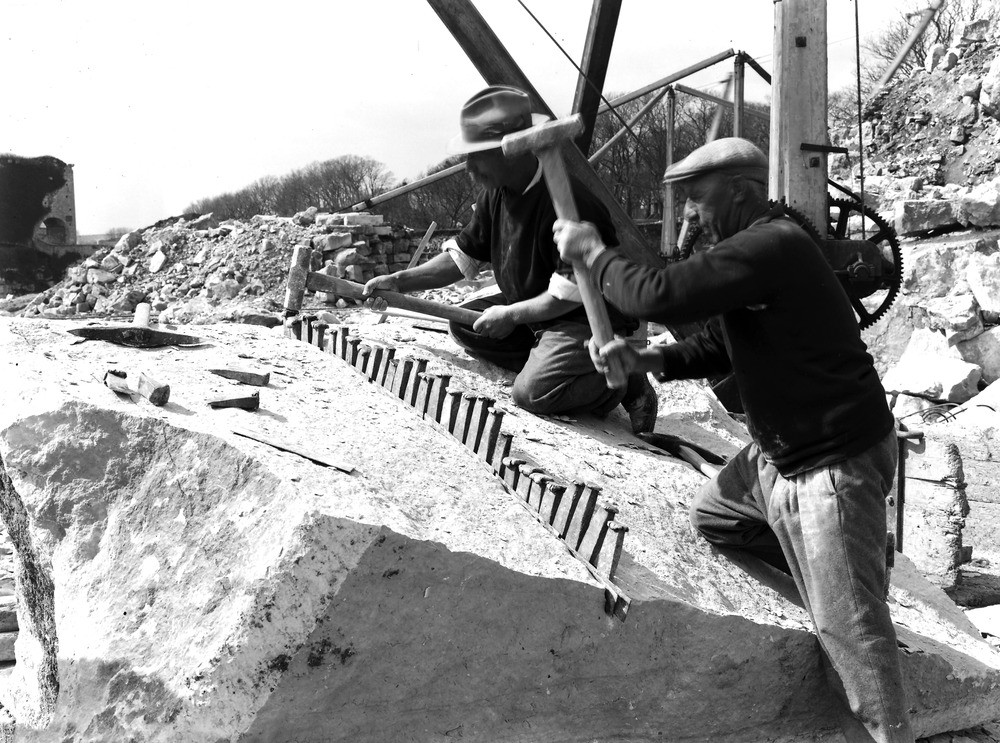| P number: | P023964 |
|---|---|
| Old photograph number: | A04987 |
| Caption: | St. Paul's Quarry, Isle of Portland, Dorset. |
| Description: | Stone has been worked on the Isle of Portland since ancient times for building and ornamental purposes. The commonly known Purbeck Marble is not a true marble but a polished fossiliferous limestone that contains the fossil shells of tiny water snails (the gastropod viviparus). The Purbeck rocks were deposited in the Jurassic and Cretaceous geological periods from about 155 to 45 million years ago. The quarrymen had their own terms for the various bed they came across. Rag stone, at the top was described as crumbly and very good; Grub, a fine bed able to produce fine paving stones and would take a polish; Roach, followed by Thornback would produce a 'blue hued stone'. At the base is the Freestone and above that the Whetson. The stone was both quarried and mined both dangerous occupations. The limestone quarries of Portland Bill have been in operation since Roman times. The characteristic white limestones which have proved to be extremely durable, even in the most polluted of urban environments, can be found in important buildings in all major cities and most large towns in the United Kingdom. |
| Date taken: | Tue Apr 01 00:00:00 GMT 1930 |
| Photographer: | Rhodes, J. |
| Copyright statement: | Crown |
| X longitude/easting: | 368500 |
| Y latitude/northing: | 72500 |
| Coordinate reference system, ESPG code: | 27700 (OSGB 1936 / British National Grid) |
| Orientation: | Landscape |
| Size: | 277.84 KB; 1000 x 743 pixels; 85 x 63 mm (print at 300 DPI); 265 x 197 mm (screen at 96 DPI); |
| Average Rating: | Not yet rated |
| Categories: | Unsorted Images, Geoscience subjects/ Economic geology/ Quarries, Geoscience subjects/ Economic geology/ Building stones, limestone |
Reviews
There is currently no feedback

